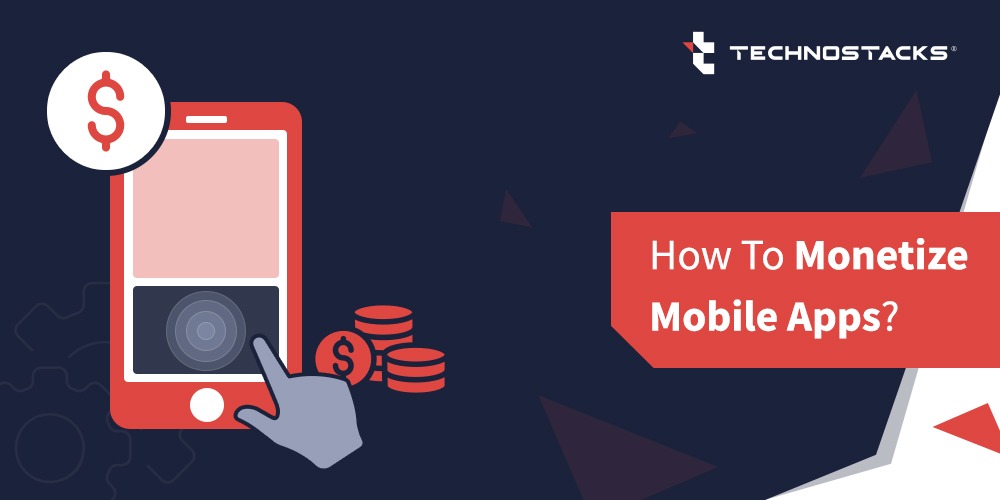How To Monetise Your Mobile Apps?
With a drastic increase in smartphone usage, the app market has practically exploded, growing exponentially to provide users with virtually everything. It started from grocery shopping to paying utility bills and booking tickets to many events, and there is now an app for all day-to-day activities.
A Google study has shown that an individual has 36 apps installed on his or her smartphone on average. The research has further revealed that one in two app users turned to apps to make purchase decisions. This critical information reveals that there is much to be made from mobile app monetization.
While 45% used apps for more information on products and businesses, 29% were using apps further down the funnel to make purchases both offline and online.
This article will especially explore what mobile app monetization means and how to generate revenue from a mobile app. We will also throw light on enabling mobile app monetization platforms, monetizing apps on Android, and other related topics.
What is App Monetization?
According to Statista Research Department, in February 2021 alone, approximately 88,500 apps were released through the Google Play Store, generating billions of dollars in revenue for app market giants like Apple and Google and thousands of mobile app developers. That there is money to be made in well-developed apps could be termed an understatement.
In simple terms, App monetization can be defined as the various ways in which an application can be used to make money. App monetization enables developers and businesses to leverage user bases in a way to make profits. For mobile app development companies, app monetization is a crucial way to generate revenue without relying on external funding. With mobile app users spending up to 3 hours on apps every day and driving up app usage, app monetization has also become an effective way to generate income for the app creators.
Whether your app is free or follows a paid model, mobile app monetization strategies vary depending upon various factors and involve multiple techniques. Depending upon the app’s type, app monetization models can be applied in one particular area or incorporate various aspects to generate revenue. However, first and foremost, let’s explore and take a close look at why mobile app monetization is so essential.
Why is App Monetization Important?
As more and more mobile applications are made available for free at the installation time, the application’s business models must be adjusted and modified to make it lucrative post-installation. Developers of free apps must change revenue models to generate income after download. In contrast, apps that come with a one-time installation fee must make accommodations for other income sources at a later stage.
For those looking to create an app and monetize, this is where mobile app monetization strategies come in. For your mobile app’s continued success and continued revenue from it, your plan must ensure growing revenue while retaining your app users and maintaining a quality user experience. It is easy to overlook the latter in a rush to monetize apps. Still, if you want to know how to generate revenue from a mobile app, it is crucial to maintain an app’s standards and ensure a quality user experience.
For those wanting to know how to monetize an app idea, there are several ways to go about it. Various app monetization models use ads to integrate purchases in-app after some trial period or acquisitions that can happen in-app after some free usage. There is also a 1-time low-cost subscription at the time of installation or other app monetization models that come in later, after the installation. We now look at the number of ways to monetize your mobile app and create an income source.
Effective Ways to Monetize Mobile Apps
One of the most successful and prominent ways to monetize an app is to advertise on it which involves in-app Advertising. How to monetize an app with ads? There are five types of advertisements that are typically used in apps to generate revenue for developers, which include:
- Interstitial or full-screen ads – These ads are placed at natural pause points are advertisements that do not interrupt users and are capable of generating clicks without frustrating your customers.
- Notification ads – Notification ads pop up on the status bar of a device. While these ads could adversely affect an app’s popularity, their presence does not go undetected, which means they’re most likely to get noticed.
- Capture form ads – Often found in gaming apps, capture form ads rely on user opt-ins. These ads offer incentives in exchange for email addresses.
- Advanced overlay ads – They are essentially interactive ads placed at transitional points, just like interstitial ads.
- Banner ads – Often found at the top or bottom of the screen. Banner ads can be distracting and can be off-putting to users. Developers are therefore advised to deploy banner ads with caution.While considering advertising to monetize apps, focus on providing a sense of engagement through ads that aid in better user experience. Your ads must entice users, not frustrate them. Concentrate on developing your brand and delivering meaningful user experiences before integrating ads right into your app.
- Paid SubscriptionsWhile a majority of apps continue to be free for use, app developers are increasingly considering incorporating a subscription model as a way to monetize their apps. Under a subscription model, the app download itself is free. The subscription comes in when users request access to more app features. Subscriptions last for a specific time, and users are required to renew them to continue using the services and premium features of an app.
Though subscription platforms have been in existence for a while now, they have found renewed success in the Coronavirus pandemic after worldwide lockdowns forced people to stay at home. Streaming services have seen tremendous success through monthly and annual subscriptions and pay-per-view models. However, though the subscription model provides a constant stream of revenue for developers, it is best suited for compelling applications and products that offer specific functionality and a quality user experience.
- Data MonetizationIt must be clear that user experience is crucial for app monetization. It is essential to keep users engaged with your app to make money through data monetization successfully. Whenever users interact with your app, they generate data.
This data and information that your users create when using your app can be quantified while keeping the identities of your users anonymous for their safety and can provide valuable insights into various aspects such as customer behaviour and spending patterns to provide useful analytics. If yours is an app that enjoys a large user base, data monetization is the way to create a dependable income source.
- In-app Purchases, Virtual Currency and GoodsA popular revenue method for gaming apps, in-app purchases for game currency and goods is a successful business model that has made many apps millions. The purchase of game currency with real cash enables users to purchase essential items, level up or unlock new levels within games. In-app purchases help developers make money off their otherwise free apps and allow users to interact with their products directly.
However, to make in-app purchases a viable business model, developers must balance providing users value for their money while retaining their attention and getting them to continue playing the game and paying more money. It is also essential to keep the app engaging and cater to the needs of non-paying users as well as they are still potential customers and form a necessary part of the pool of players that keep the games interesting.
- Introduce Premium Versions with Special Features“Freemium” apps, as they are called, are gaining much popularity. They do not require users to pay anything upfront, allowing apps to create a buzz while introducing additional, gated features for a premium. Developers can create an entirely separate version of their app and load them with unique features and services that can be accessed for a price.
The free version of an app gives users a sense of what your app can do or how it can help them, acting as a sort of a teaser for your paid app that contains even more quality services. If your customers enjoy your free app’s services and features, they will likely pay for an advanced version.
Developers must create clear distinctions between the two versions and make it worth the money for their users to successfully monetize their apps’ premium versions.
- Paid SubscriptionsWhile a majority of apps continue to be free for use, app developers are increasingly considering incorporating a subscription model as a way to monetize their apps. Under a subscription model, the app download itself is free. The subscription comes in when users request access to more app features. Subscriptions last for a specific time, and users are required to renew them to continue using the services and premium features of an app.
Key Takeaways
In conclusion, while the above are a few tried and tested mobile app monetization strategies, developers must focus on and greatly enhance their app’s user experience to start making money from them.
Besides that, developers can also regularly refresh their app content and ensure a constant stream of new content to keep users coming back to explore more. Developers can also introduce multiple paying options for their services to continue to use apps by their users without worrying about remembering to renew services periodically. Contact us for more information.








